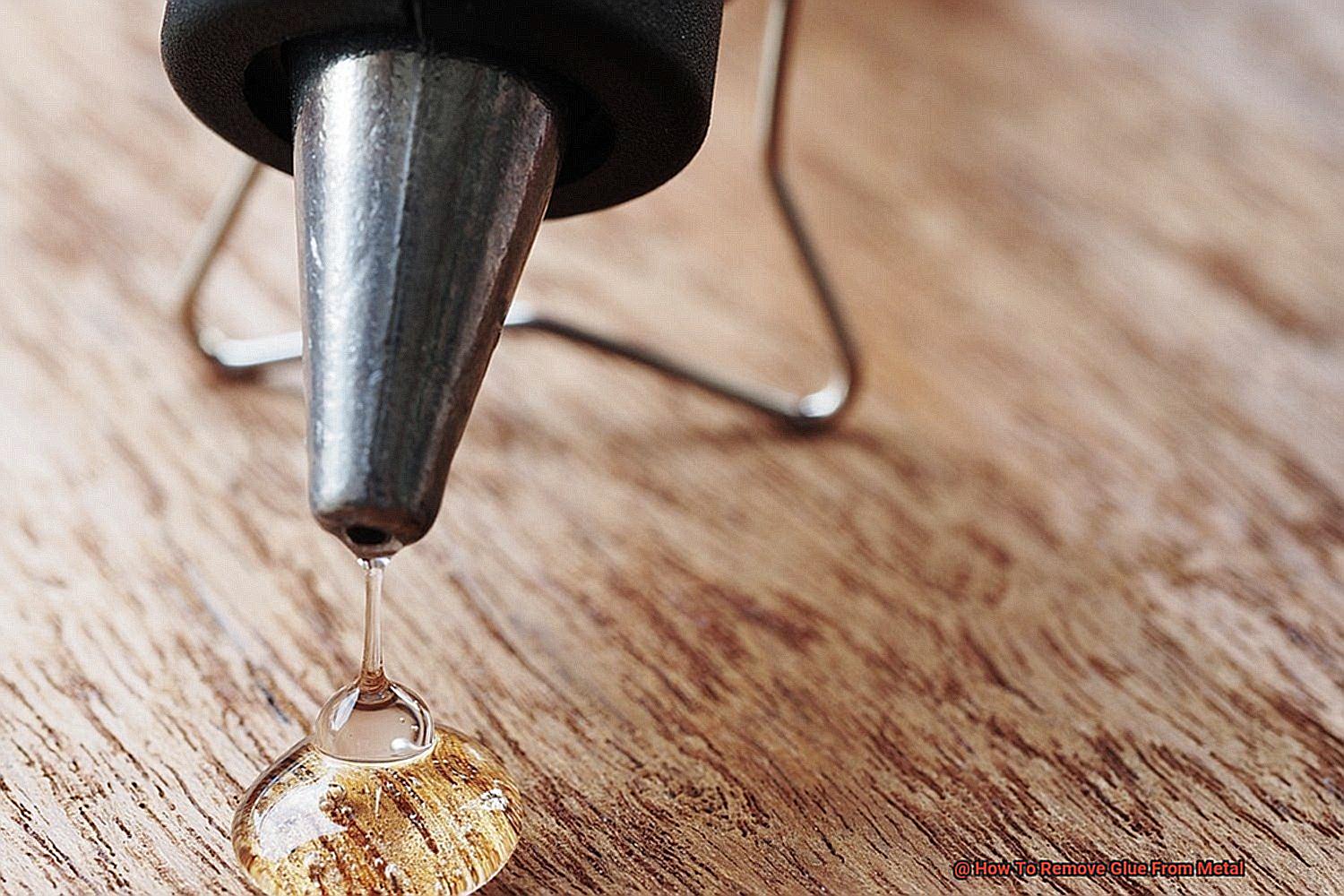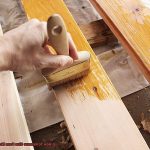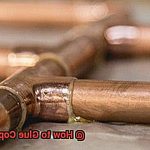Have you ever found yourself struggling to remove glue residue from a metal surface or trying to separate two metal pieces that have been glued together?
It can be incredibly frustrating, especially if you don’t know the right way to do it. Metal glue is known for its strength and longevity, making it an excellent adhesive for many forms of metal.
However, removing it can be a daunting task. But fear not.
In this blog post, we’ll explore some of the most effective ways to remove glue from metal surfaces. From household items like vinegar and baking soda to specialized products like adhesive removers, we’ve got you covered.
We’ll provide extensive step-by-step guides that will take you through the process safely and efficiently. But that’s not all – we’ll also highlight some common mistakes people make when attempting to remove glue from metal and give tips on how to avoid them.
Whether you’re a newbie or a seasoned DIY enthusiast, this blog post is for you. By the end of this post, you’ll have all the knowledge needed to tackle stubborn glue residue or separate those tightly glued metal pieces with ease.
So get ready to try out some new techniques and say goodbye to pesky glue stains once and for all.
What Types of Glue Can Be Used on Metal?
Contents

There are several types of glue that can be used on metal, each with its unique advantages and disadvantages. Epoxy is a two-part adhesive that bonds metal surfaces in a strong and long-lasting way, making it a go-to choice for automotive and industrial settings.
It’s like the dependable superhero of the adhesive world – always there when you need it, reliable, and strong. If you’re looking for a fast-drying adhesive that bonds quickly and robustly to metal surfaces, cyanoacrylate, or super glue, may be your best bet.
It’s perfect for small repairs and projects but not suitable for larger surfaces or heavy-duty applications. Think of it as the hot-headed cousin of epoxy – quick to act but not always appropriate.
Silicone adhesive is a versatile option that can be used on both metallic and non-metal surfaces. Waterproof and heat-resistant, it’s ideal for applications exposed to moisture and high temperatures.
Consider it as the trustworthy friend who always has your back – dependable but not always the most cost-effective option. Polyurethane adhesive is a strong and flexible option that can bond metal to a variety of surfaces, including wood, plastic, and rubber.
This chameleon of the adhesive world is commonly used in building and automotive industries. It will adapt to any situation or surface like a pro.
It’s crucial to note that not all adhesives are suitable for all metal types. Some adhesives may not adhere well to aluminum or stainless steel.
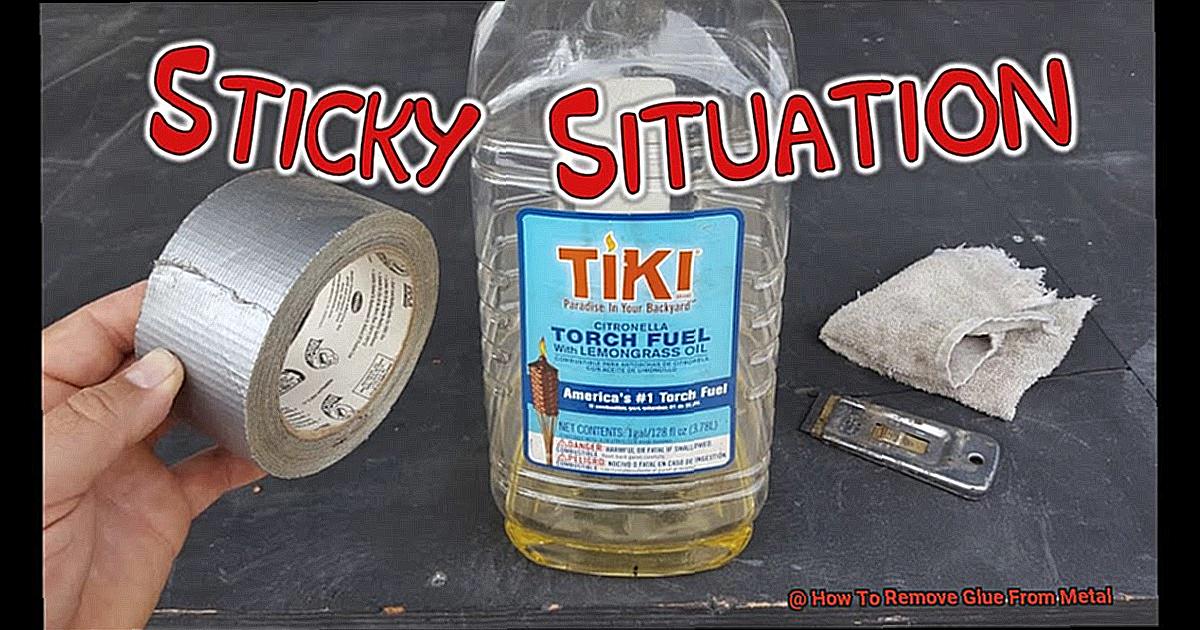
To avoid any mishaps, make sure to verify the manufacturer’s recommendations before using any adhesive on metal surfaces. Removing glue from metal surfaces requires different approaches based on the type of glue used.
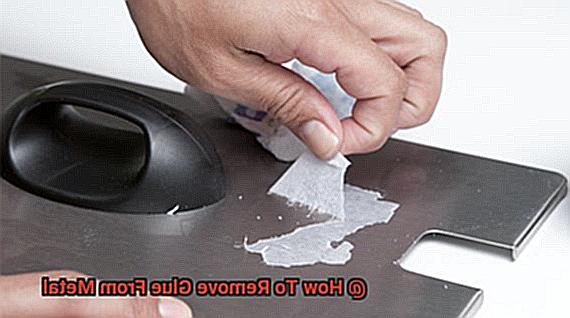
Acetone is a common solution, but it can damage painted surfaces and should not be used on plastic or rubber products. Alternatives include using a mixture of baking soda and water or even heating the glue with a hairdryer until it softens.
Removing Glue with Acetone
Acetone is a powerful solvent that breaks down the adhesion properties of glue, making it easier to wipe or scrape away. However, it’s crucial to test a small, inconspicuous area first since acetone can damage certain types of metal.
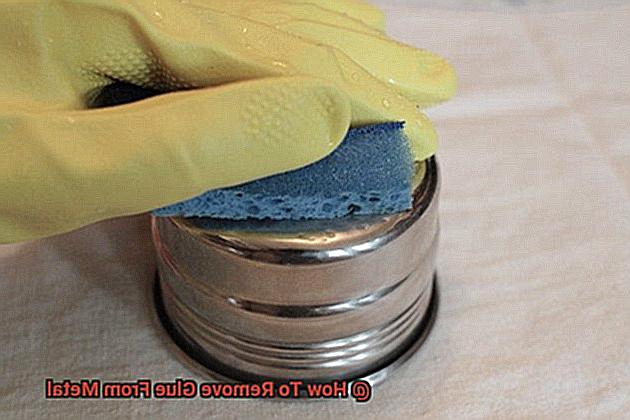
To begin your glue-removing mission, gather your supplies: acetone (available at most hardware or home improvement stores), a soft cloth or paper towel, and a plastic scraper or putty knife. For added protection, consider wearing gloves to shield your skin from the potent solvent.
To start the process, apply a small amount of acetone to the affected area using the cloth or paper towel. Allow the acetone to penetrate the glue for a few minutes before gently scraping away the softened glue with the scraper or putty knife.
Be sure to avoid scratching or damaging the metal surface while doing so. If any glue remains after this initial attempt, repeat the process until all traces of glue have vanished.
After you’re finished, clean the area with soap and water to remove any residual acetone. It’s worth noting that acetone must be used with caution and in a well-ventilated area due to its flammable and strong fume-emitting nature.
Additionally, it may not be suitable for all types of glue or metal surfaces, so always consult the manufacturer’s instructions or seek professional advice if you’re unsure. Acetone is undoubtedly a superhero when it comes to removing glue from metallic surfaces.
Alternatives to Acetone for Removing Glue
Removing glue from metal doesn’t have to involve harsh chemicals like acetone.
Luckily, there are several safe and effective alternatives that are kinder to your health and the environment. One such alternative is rubbing alcohol, a household staple that can dissolve glue with ease.
Just soak a cotton ball or cloth in rubbing alcohol and rub it over the glue until it dissolves. While this method may take a bit longer than using acetone, it’s a more cost-effective and gentle option.
Vinegar is another powerful alternative to acetone that can break down the bond of the glue. Soak a cloth in vinegar and place it on top of the glue for a few hours.
Once the glue has softened, use a scraper or cloth to remove it effortlessly. Baking soda and coconut oil are two additional alternatives to acetone that work wonders on glue.
Mix baking soda with water and apply it to the glue before scrubbing it off with a brush. Alternatively, apply coconut oil to the glue and leave it overnight before wiping it away with a cloth.
Removing Super Glue from Metal Screws and Small Parts
Fear not, because with the right techniques and tools, you can quickly break the stubborn glue without damaging the surface of your precious metal.
The first step is identifying the type of metal you are dealing with. This is crucial because different metals may react differently to solvents or chemicals, which can cause damage to the surface.
Once you have determined the type of metal, you can move on to the fun part – removing the super glue. Acetone is a popular solvent for removing super glue from metal screws and small parts, but there are other options available.
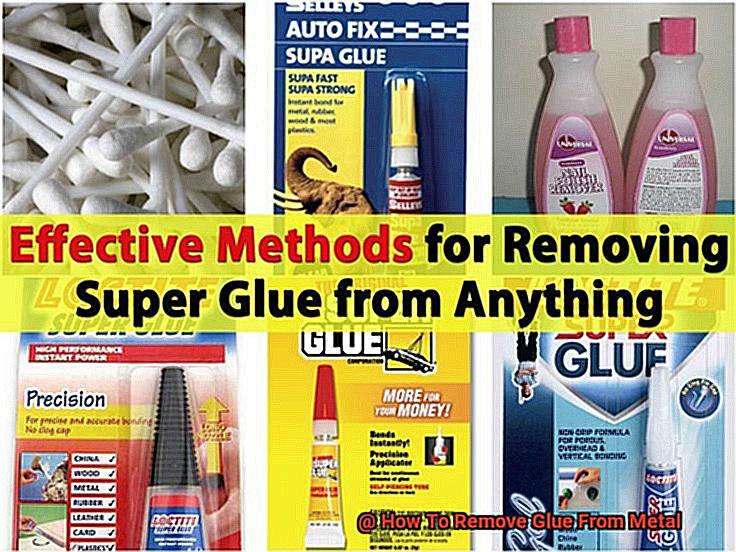
White vinegar and rubbing alcohol are both effective alternatives. Simply soak the affected area in your chosen solvent for a few minutes and then gently scrape off the glue with a toothbrush or plastic scraper.
If you’re working with delicate or intricate parts, it’s best to apply the solvent directly to the glue using a cotton swab or toothpick. This will help prevent any damage to the surrounding area.
In some cases, using heat can also help loosen the bond between the super glue and the metal surface. A hairdryer or heat gun can be used to warm up the affected area before scraping off the glue.
Always read and follow the instructions on the product label carefully.
e-dWu1KjCvg” >
Using Goo Gone to Remove Super Glue from Metal and Plastic Surfaces
Goo Gone is a citrus-based adhesive remover that will quickly and easily break down the bond between the glue and the surface.
Using Goo Gone is a breeze. Start by ensuring the affected area is clean and dry.
Apply a small amount of the solution to a clean cloth or cotton ball, and gently rub it onto the affected area in a circular motion. Allow it to sit for a few minutes to penetrate the glue.
Once you’ve given it some time, you can effortlessly remove the glue with a plastic scraper or your fingernail. Just be careful not to scratch or damage the surface of your metal or plastic.
If there are still traces of glue remaining, repeat the process until it’s completely gone. Remember, Goo Gone may not work on all types of super glue, especially those that are water-resistant or heat-resistant.
In such cases, you may need to use a stronger solvent like acetone or seek professional assistance. It’s also essential to follow safety precautions when using Goo Gone.
Use it in a well-ventilated area and avoid prolonged skin contact as it can cause irritation or allergic reactions. Always read and follow the manufacturer’s instructions before use.
You can easily get rid of stubborn glue stains without damaging your valuable belongings with proper usage and precautions.
Also Read: Glue Information
Conclusion
Removing glue from metal surfaces can seem like a daunting task, but fear not.
With the right tools and techniques, it can be done safely and efficiently. There are various types of adhesives that can be used on metal surfaces, each with their own advantages and disadvantages.
However, before using any adhesive on your precious metallic objects, it’s crucial to check the manufacturer’s specifications. One of the most potent solvents for removing glue is acetone.
It destroys the adhesion properties of glue, making it easy to wipe or scrape away. But beware.
Some types of metals can be damaged by acetone. If you’re unsure about using acetone on your metal surface, there are several safe and effective alternatives available such as rubbing alcohol, vinegar, baking soda, and even coconut oil.
When dealing with super glue on small parts or screws, it’s essential to determine the type of metal first since different metals react differently to solvents or chemicals. Acetone is a common solvent for removing super glue from metal screws and small sections; however, white vinegar and rubbing alcohol are also effective alternatives.
Just make sure to follow safety instructions when working with any adhesive remover material.

